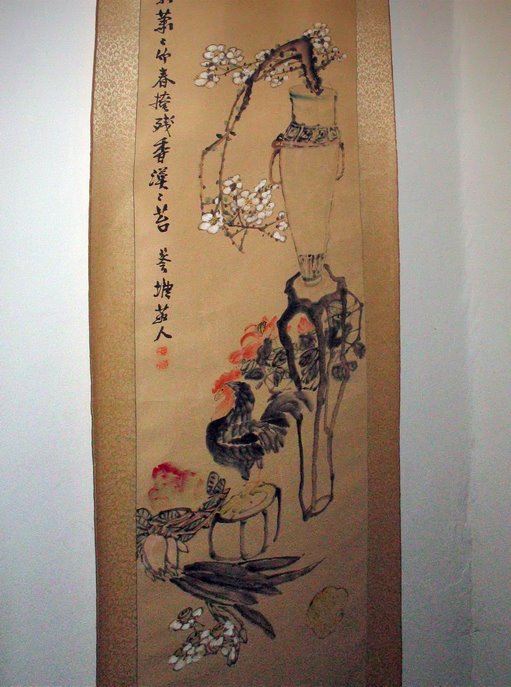
From my point of view, two reasons contribute to today’s Bouguereau’s lukewarm reputation; one from the audience, the other from the painter himself.
“There's only one kind of painting. It is the painting that presents the eye with perfection, the kind of beautiful and impeccable enamel you find in Veronese and Titian,” Bouguereau said in 1895. Unfortunately, it is partly his perfect craftsmanship that has blinded some viewers from piecing through the sheer beauty to explore the emotion power. Those immaculate hands and feet, exquisite skin tones, and subtle details make eyes stay and unwilling to probe further. The great paintings command viewers constant looking: The more one looks, the less apparent the surface would appear and the more unconscious and conscious thinking it may involve. That is the joy of visual art. It may only take a few seconds for one to go through Rothko’s Red and Orange, but some can feel totally dissolved in the color after a few minutes’ close stare. Portrait by Rembrandt may have only a dip of light on the tip of the nose, yet their eyes are always penetrative and unfaltering true. Bouguereau, on the other hand, has too much to offer for the pleasure of eyes: the tender veins from the arms, the warm pink along the nail grooves, the nuance in light and shade of the body. The viewers, when intoxicated with the immediacy of proficiency and effectivity, would bother to challenge themselves no further.
Bouguereau’s denigration in reputation began as early as his death when Edward Munch had painted his Dance of Life while Gustav Mahler just finished his No. 6 symphony in tragic manner. Idealism would only be linked to naivety and French Academy was deemed as “old establishment” after two world wars. Execution became less and less important than concepts in post-war period. It was not until recently that Bouguereau has begun to receive attention in both academia and market.
Bouguereau’s poetry and harmony are as simply effective as effervescence and happiness in Mozart’s music. Most of those who enjoy Mozart seldom study him. The glossy texture seems easy to “understand”, yet requires too much energy and time to grasp the deep meaning under streams of notes. The declination of classic music in the rise of pop and rock alienates the majority of audience in the same way as the modern art propaganda has done to school of old masters. Thus it was not an incident that the majority of the audience in yesterday’s lecture are gray-haired.
Secondly, his desire for happiness, beauty and purity leads to somewhat monotonous topics and styles. Bouguereau said nothing is more difficult to paint children. In his paintings they caress, touch, kiss or sleep in untainted innocence and ultimate joy. His shepherd woman, (modeled consistently with a woman named Carmen in reality) is called “princess transformed into rustic”, and if her clothes were taken off, would be as sensual as the nymphs. For over five decades, he didn’t progress in his artistic style, nor his subjects, which becomes both his pleasure and his necessity of living. It is true that antiquity or classicism has never totally fallen out of style in art history, but fastidious nicety and exactness may.

Bouguereau once said: “One has to seek Beauty and Truth”. But when truth is contradictory to beauty in his art, he unmistakenly favored the latter. As early as1850’s and 1860’s, he explored dark and violence in both mythological and religious themes (Dante And Virgil In Hell and The Remorse of Orestes). But soon he abandoned such efforts and changed to paler palette and elegant topics. His human figures became always gorgeous, void of defect and somewhat (particularly in mythological themes) mannered. Any potential tension is lost in bright yet soft light, which in turn dissolves into silky skin. To some extent, his genre paintings are of no difference from those mythological ones: no matter who he painted, they are always as perfect as those in arcadia. Thus he locked himself in a golden cage of what he thought paintings should be: only about beauty and true joy as opposed to truth.
The idiosyncrasy of Bouguereau’s stringency in styles and topics can be best observed in Carnegie Museum of Art, which displays art works chronologically. His 6-footer of a peasant girl (Haymaker), a little plump yet tender and smooth stands against small spontaneous works by Manet and Sisley. Such striking contrast may confuse some visitors as if the painting came from the age of Jacques-Louis David or Jean Auguste Ingres. (Unfortunately, the museum does not have any works of the two for such comparison) Often after viewers have expressed their admiration of technique, they soon move to the other side of the wall, where the loose and painterly style of Monet’s seashore catch their eyes.
.jpg)
In 1895, Henry Clay Frick bought the painting named Espičglerie (Mischievous girl) from William Bouguereau for $5,000. (For a quick comparison, one year after the Carnegie Institute acquired “The Wreck” from Winslow Homer at its first international exhibition at the same price, which is the highest price for a single work Homer had ever got in his lifetime.) For Henry, the subject reminded him of his deceased daughter Matha, who, if still alive, would have been the same age as the girl in the painting . He kept the painting all his life because he must have seen something deeper than the angle face, something stirred by another affectionate father, who had also seen death of two children in his life time.
It moves me too to see his painting of children, regardless of dreams, fantasy or reality. There under the sheer beauty lies the harmony of love, passion and consummate mastery execution.














